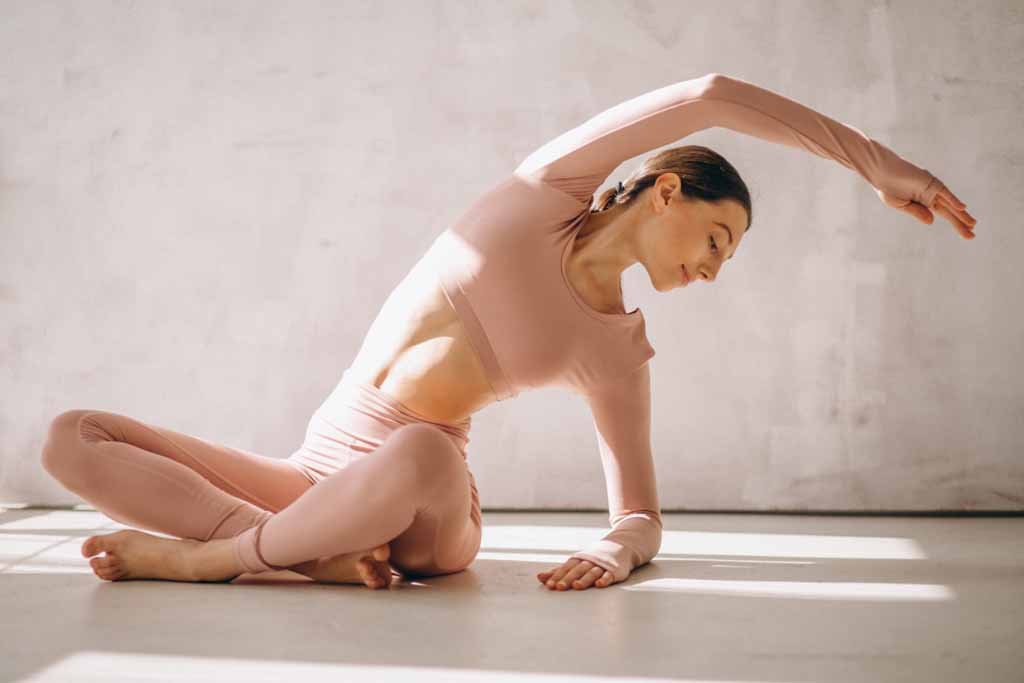How long does it take to become flexible with yoga?
Not flexible enough to be known as a professionally flexible yogi? Have been practicing for quite a long time but still do not see the best results for a flexible body? Wondering if you are actually practicing the right way to build in the best flexibility of your body? With all these questions and many alongside a yogi eventually ends p thinking about how long it takes to become flexible with yoga anyway!!
With this question arising into our minds, most of us already know the answer to it but we keep pushing that away because that actually now annoys us to some extent. Yes, you guessed it right!! The answer is mere practice, practice, and practice. Everyone is a bit too tired of listening to this answer but I will tell you below the reason why it keeps on popping upon us.
Yoga and Flexibility
Many of us opt for yoga as our daily routine for many different outcomes. These may include our peace, motivation for health, core strengthening, body toning, and muscle stretching. Apart from all of these benefitting features of yoga, another one that tops the list is to gain the flexibility that comes with yoga.
Flexibility can be a long process with slow progression on its way. Yet still, we can say that the flexibility of a body can demand a different drill from persons of different age groups, stamina, and musculature, and body types. Therefore a person cannot define the time period for gaining body flexibility with any kind of exercise or workout just by looking at someone else’s progress.
So take your time and let your body nourish.
Flexibility as Your Yoga journey
As well all know that a journey makes us change many decisions once we get onto it despite planning a lot beforehand. Likewise gaining flexibility in yoga may prove as a journey that demands a change in plan as you move on its way. The time of a simple pose can be increased with the vacating levels of stretch in it to endure the best flexibility gains according to the person’s demand and stamina. All poses and types of yoga are not equally doable for an average stamina person and ask for a better
All about Time
If you really want to start from the very beginning, try to start your home practice first. For that, I suggest you start some 15 30 days home yoga challenge and try to know your strength and limits of flexibility.
Being flexible with yoga is all about giving more time and practice. A thorough increase in time can not only strengthen your core but also flexibility.
To help you set your routine we do have some benefitting tips and poses.
Practicing to Perfection
As each one of us has a different definition of flexibility, we all conquer the quest of gaining flexibility in a different way. To some of us, becoming flexible with yoga is all about reaching down your toes without a muscle pull or performing a full split without risking an injury. Although the timelines are different to each one of us consistency to your practice helps it reach the perfection we are talking about.
By way of becoming flexible with yoga, it takes a lot of courage and constant motivation. Flexibility can be time taking so make sure you do not give up your practice in a week or two amid seeing no results to your hardworking.
Yoga styles for best Flexibility
Yoga can be extremely specific when you need some specific results you ask for. Yoga can be extremely choosy and a diversified field to choose the right one for yourself. As we are only concerned about becoming flexible with yoga, there are certain poses that give you a focused action plan for your flexibility.
With so much to choose from, as a beginner, you should always start with a basic pose and work towards the more oriented ones. This helps you opening up your body, muscles, and joints to accommodate all the stress that one has to put on them to bring about the required flexibility.
These yoga are more than just physical movement and stretch. When talking of flexibility, each part of our body requires a different level of flexibility and there is a separate pose for it. Let us guide you all with the best yoga styles for flexibility.
- Standing Forward Pose
- Low Lunge
- Side Stretch
- Child’s Pose
1. Standing Forward Pose
This is the basic pose you start as a beginner. This pose can be performed in the following way:
- Stand on a mat with your legs wide apart in symmetry with your hips.
- Now bend down to touch your toes without bending your knees with ease.
- Rest your stomach on your thighs. Once you are in this pose, now you can gradually straighten your knees until you feel the strain on the back of your knees and legs.
Note: consistency in this pose can lead to an increase in the flexibility of your lower limbs and thighs than any other parts.
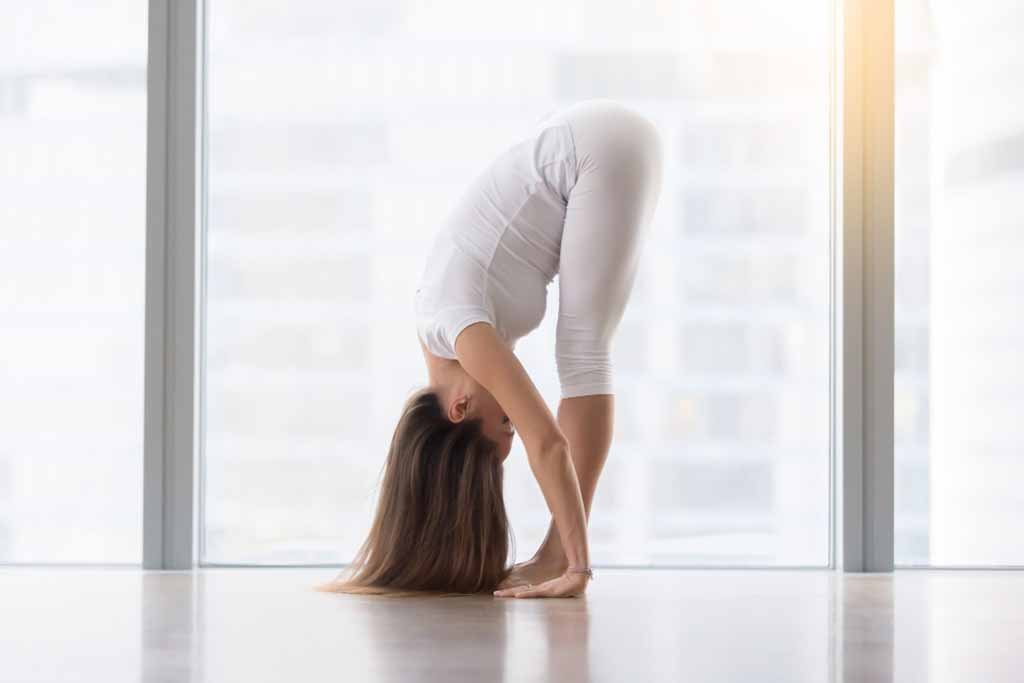
2. Low lunge
It is a post-movement from the forward dog pose and works on the flexibility of your thighs and groins. The extension is also extremely important in opening up your chest and flexor muscles.
This can be done in the following steps:
- From the dog pose, step out your right foot so your ties are in line with your fingertips
Bend until your knee makes up an angle of 90 degrees with the ground. - Place the other knee on the floor with the foot extended back straight.
- Descend your tailbone and extend your sternum forward
Push your right outer hip back and posterior pelvic tilt by descending your tailbone. - Repeat on another side.
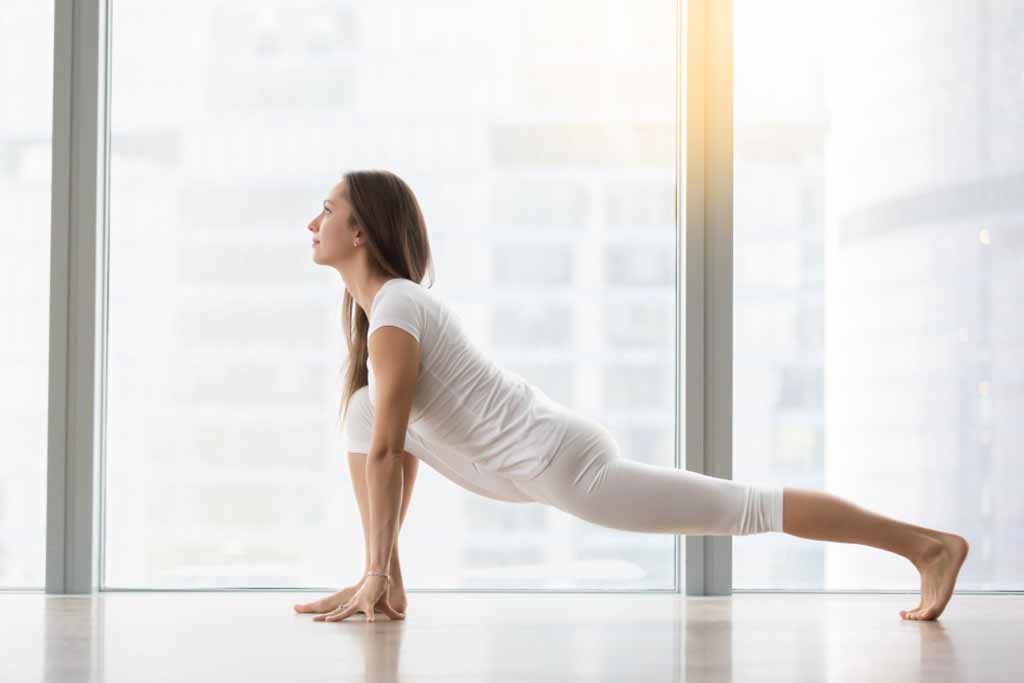
3. Side stretch
Out of many other poses of yoga, this yoga pose can be distinctively great for the flexibility of your chest, shoulder, hips, and hamstrings. Like all others out there, this pose aims at giving flexibility by stretching and bending your torso sideways while stretching your 1 leg out one at a time. This is how it is done:
- Extend your one leg out forward.
- Bend down your torso in the direction of your extended leg without bending your knees.
Now Stretch and bend down to the level you can go comfortably. - Hold your breath for 5 seconds and then exhale to life back your torso up.
- Repeat the same for the other side.
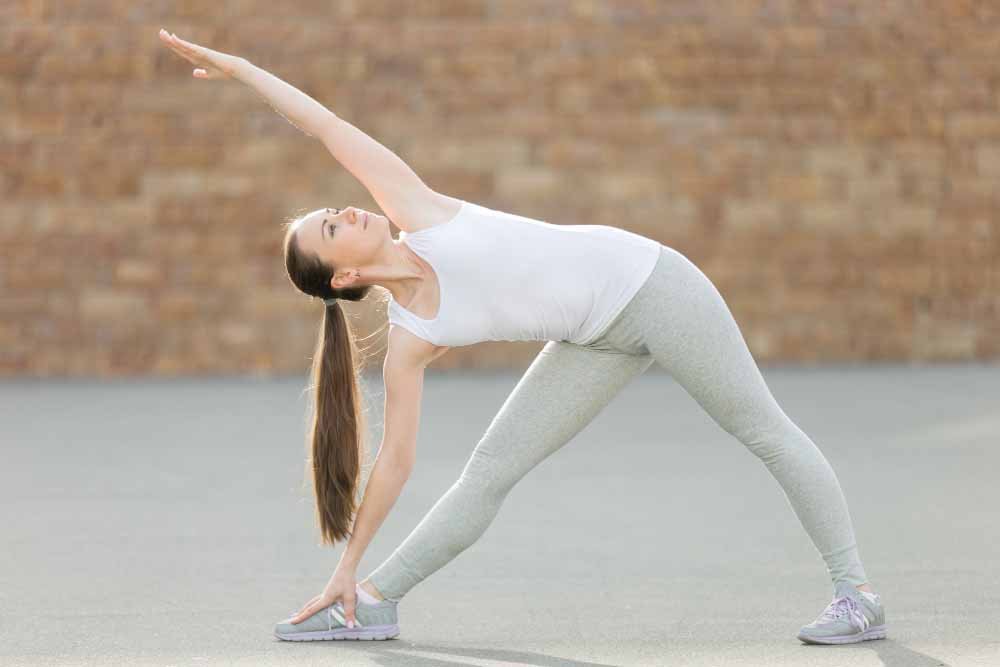
4. Child’s Pose
This is one of the easiest of all when it comes to the degree of stretching. This pose focuses on the flexibility of your torso including your shoulders, chest, and your flexor muscles as well.
This can be performed in the following way:
- Sit on a mat and bend down your knees backward as your seat can be on your heels.
- Now bend down in the forward direction while stretching your arms forward and placing your forehead on the mat.
- Stretch your shoulders away from your face by bending them while stretching them forward.
- Hold your breath for 5 seconds and exhale while pulling back your torso up.
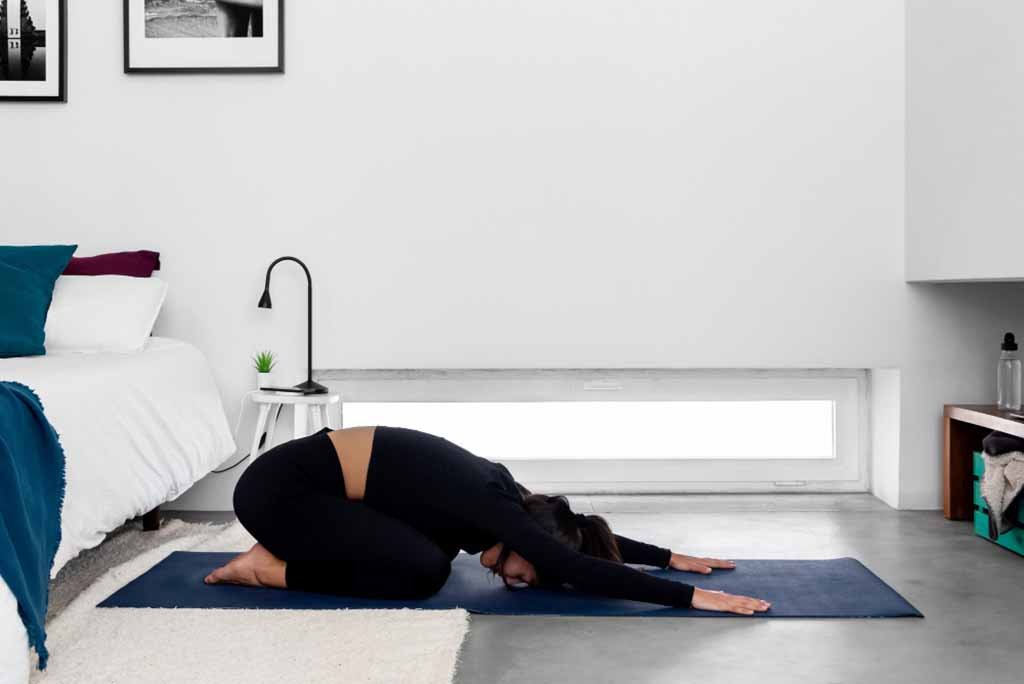
Things to Remember while stretching
Many of us start off a yoga routine with some clear aims in our minds. In order to achieve them, a person may overdo a practice routine and may go off the record with what he was planning at the very beginning. Some may also get frustrated soon while overdoing a yoga practice and not producing the required results. To avoid such bad endings we suggest you have a look at our list of things to avoid while practicing to become flexible with yoga.
These are:
• Be patient while you are practicing. It may sound a bit annoying but all you need to do while achieving a goal is to practice patience as well. Pushing yourself too much and then frustratingly stopping it may carry you away from your motivations. Every workout and practice should be given time with patience to endure the best results.
• Listen to your body every day cannot be the same for our moods and our bodies. On some days all our body and mind want is to sit and relax while some days are full of energizing energies and fresh moods. So do not try to drag your body more than it can take and respect your soul.
• Enjoy what you do. Apart from what you do and what you want from a yoga practice, you should actually try to love what you do. Many people start doing yoga with different golf but end up falling in love with what else yoga provides them with. Every day can be progressive and one step closer to the goal when you start loving it.
Pros of doing yoga consistently
There is no certain time frame that can answer the question of how long does it take to become flexible with yoga. All you can do is to become consistent in whatever you do to cash the achievements. Consistent practicality not only makes you flexible with yoga but helps you build up your stamina. There are many beneficial factors that turn out to make your yoga practice wondrous.
Some of them are:
• Gives your more core strength.
• Modifies your body for a little extra stretch every coming day
• Makes a soulful connection between your mind and body.
• Increases the body’s flexibility.
• Tones your body in every possible way.
Cons of yoga doing consistently
It might feel a bit ambiguous to all of us to know and talk about the cons of doing consistently but it does exist. As some of the yoga poses impart goodness for your body and mind health other poses and stretches may have their own cons.
Some of the cons that yoga can have are the following:
injury risk
Every time you perform a pose you are at risk of having any bodily injury. The sharp turns, movement of limbs and joints, and the foot balance, all are on the verge of giving your serious injuries.
These injuries can be extremely bad when it comes to the neck, head, and vertebrae motion. At times when your musculature is at low strength even a little bit of the stretch can cause it ruptures or deforms.
Bone diseases
People with bone diseases like osteomalacia or osteoporosis should also avoid doing yoga consistently. Some of the poses may not harm un these conditions but many others do. People with bone diseases may cause a severe bone breakdown or fracture even with a minor posture performance.
Likewise, people with back disc problems should also avoid yoga in many forms and try not to put much of a strain on their back. The more you put a strain on it, the more it has the chance to make conditions like disc slips and disk degeneration.
Dehydration
It may be considered as a nonvirulent con of yoga to most of us but for people with many heart diseases and other diseases like high blood sugar levels with high blood pressure regulations, this condition can be sometimes fatal. For specifically hot yoga, dehydration can be dangerously common for people like these. A hit yoga requires a humid and hot yoga environment with a long session of at least 90 minutes. Hot yoga can be very beneficial to most of us but have a high chance of giving major dehydration and problems like heart strokes in such a condition.
Plus a warmer environmental condition may prove to be more damaging to our muscles and tendons. The sweat breakout with warmer muscles is more viable to any kind of injury or a muscle tear. So even if you are a healthy yogi, do not overdo a specific yoga without considering your body and health conditions.
Conclusion:
For how long does it take to become flexible with yoga can end up at mere practicing and giving time to it. This is all a person can rely on when actually wants to become flexible with yoga. This can be a time taking process but ends up giving a long-run effective benefit. The struggle is worth the reward. So I suggest you be patient with yourself and your body and love what you do.

